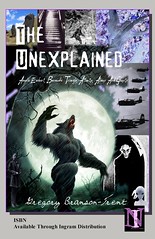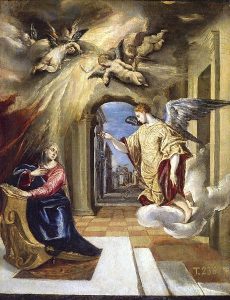The shallow and contradictory foundations for “scholarly” assumptions and beliefs in “the historical Jesus”, by both Christian and atheist scholars, are brought out in this recent remark forwarded to me by someone who found it on Exploring Our Matrix:
I think this is my #1 reason for not being a mythicist. I consider it appropriate to create and/or adopt a theory that fits the evidence, rather than vice versa, whenever possible and to the greatest extent possible. This is also, I suspect, the #1 reason that I’ve compared mythicism and creationism. It is not that history and the natural sciences function in precisely the same way or offer comparable levels of certainty. They don’t. But in the case of both mythicism and creationism (both of which have many permutations and varieties) I see a deliberate attempt to reinterpret evidence to fit an already-adopted theory, when that evidence can be explained in a straightforward and persuasive matter by another theory.
The first sentence is a truism. It is a motherhood statement that any and everyone will claim they believe and follow. So we can move on to the next point:
This is also, I suspect, the #1 reason that I’ve compared mythicism and creationism. It is not that history and the natural sciences function in precisely the same way or offer comparable levels of certainty. They don’t. But in the case of both mythicism and creationism (both of which have many permutations and varieties) . . . .
I demonstrated (Creationist slurs) how Associate Professor of Religion, James McGrath, posits his own idiosyncratic self-serving definitions of “creationism”. His new point of comparison is that mythicism is like creationism because both have “many permutations and varieties”. I am not sure if he is serious or joking or having a late night.
One can count as many as 4 mythical Jesus varieties to 20 historical Jesus permutations on this eight year old page alone: Historical Jesus Theories.
Accusing the majority of historians of being the minority
It is also interesting that in the same passage James takes the chance to include his own area of biblical studies under the general class of “history” — as if the historical tools and methodologies of Jesus scholars are in any way comparable to the tools and methodologies found among what is usually thought of as History in academia. When I have pointed out to him that “minimalists” who have finally had some measure of success in bringing the study of the biblical kingdom of Israel up to the same standard of normal historical analysis and enquiry found in historical studies generally, his reply has been to suggest that it is their methodology as the minority one!!!! (See here where James writes: “I’m willing to listen if you want to explain why the minimalist historians working on ancient Israel should be the standard for the entire discipline of history.” In fact the so-called “minimalists” are actually arguing that secondary evidence should be interpreted through the lens of primary evidence and avoid all pre-suppositions about the historicity or otherwise of the secondary evidence.)
Finding the “Historical Jesus” who fits our own image
I see a deliberate attempt to reinterpret evidence to fit an already-adopted theory . . . .
This is another somewhat unscholarly claim. James knows Albert Schweitzer’s famous remark that each historical Jesus scholar has tended to find in the evidence a Jesus who turns out to be the very image of the scholar! And it has been no different since then.
- The Irish Catholic John Dominic Crossan found a Jesus who was an anti-imperialist revolutionary.
- Rabbi Hyam Maccoby finds a Jesus who was a rabbi.
- There is even the “mystical” John Shelby Spong’s Jesus who is not to be found in flesh, but who is yet historical but can only be found in some mystical experience.
- And more recently existentialist philosopher John Carroll’s existentialist Jesus.
And a recent commenter on this page in Exploring Our Matrix was popular atheist and Christian debunker, ex-evangelical preacher John W. Loftus himself, coming out and arguing for his own historical Jesus. He has argued the same again here.
Guess what John’s historical Jesus looks like . . . .
- It’s a cultic charismatic Jesus who was a failed apocalyptic preacher.
John Loftus has also argued elsewhere (on FRDB) that his particular historical Jesus is the one that attracts his audiences and that his motive is to change “the religious landscape”. So we can be have some justification for thinking that John’s particular type of historical Jesus is no accident or disinterested outcome of objective research.
So from Christian Schweitzer to Christian debunking atheist Loftus, one can see the evidence for the “deliberate reinterpretation of the evidence to fit already adopted historical Jesus theories”.
Blinded by our cultural icons
. . . . when that evidence can be explained in a straightforward and persuasive matter by another theory.
Our deep seated cultural heritage makes it impossible for some of us to see just how nonstraightforward and unpersuasive the gospel narratives are as attempts to write real history. The fact is (as I have been discussing recently) that leading historical Jesus scholars such as E. P. Sanders assume from start to finish the historicity of Jesus, and never go further than discussing plot details to decide which bits are more plausible than others (e.g. Jesus going to a synagogue is more plausible than him walking on water) and work with nothing more than the self-serving and contradictory “tools” of “criteria of authenticity”. (See my comment and reply by Steven Carr here on the contradictory and self-serving nature of these tools.)
I wonder if the tendency to see the historical Jesus who supports our own place and identity within our wider culture should be seen as instructive about the real significance of the the hostility of many biblical scholars against “Jesus mythicism”.
Like this:
Like Loading...


